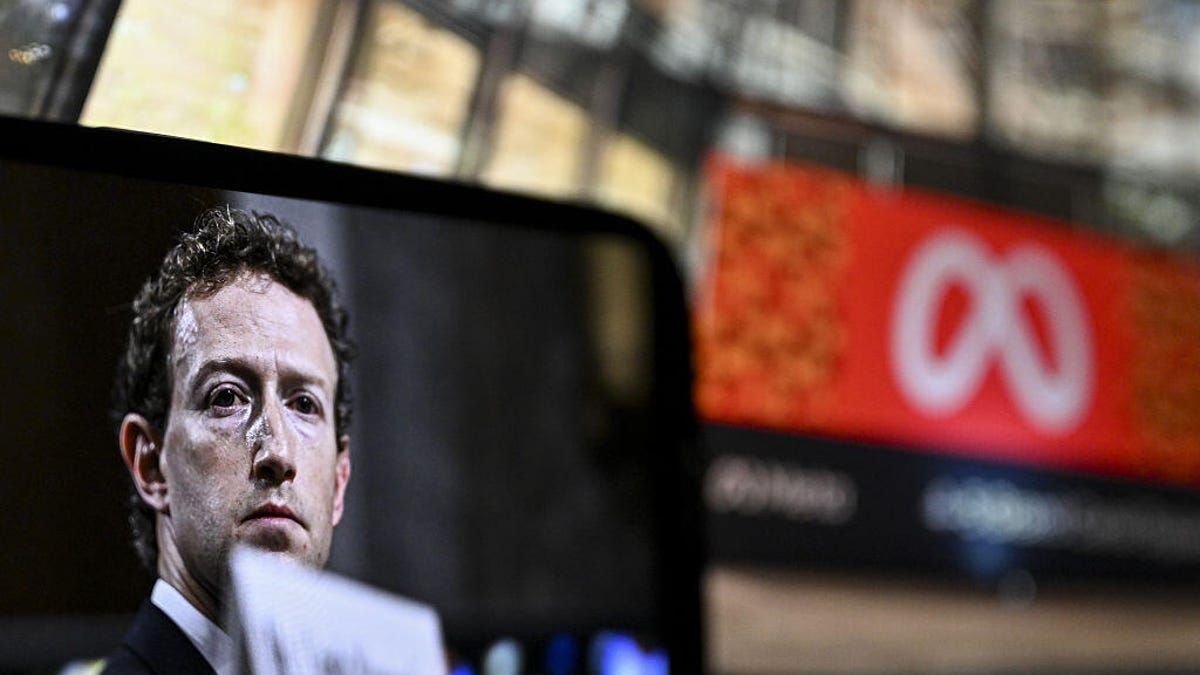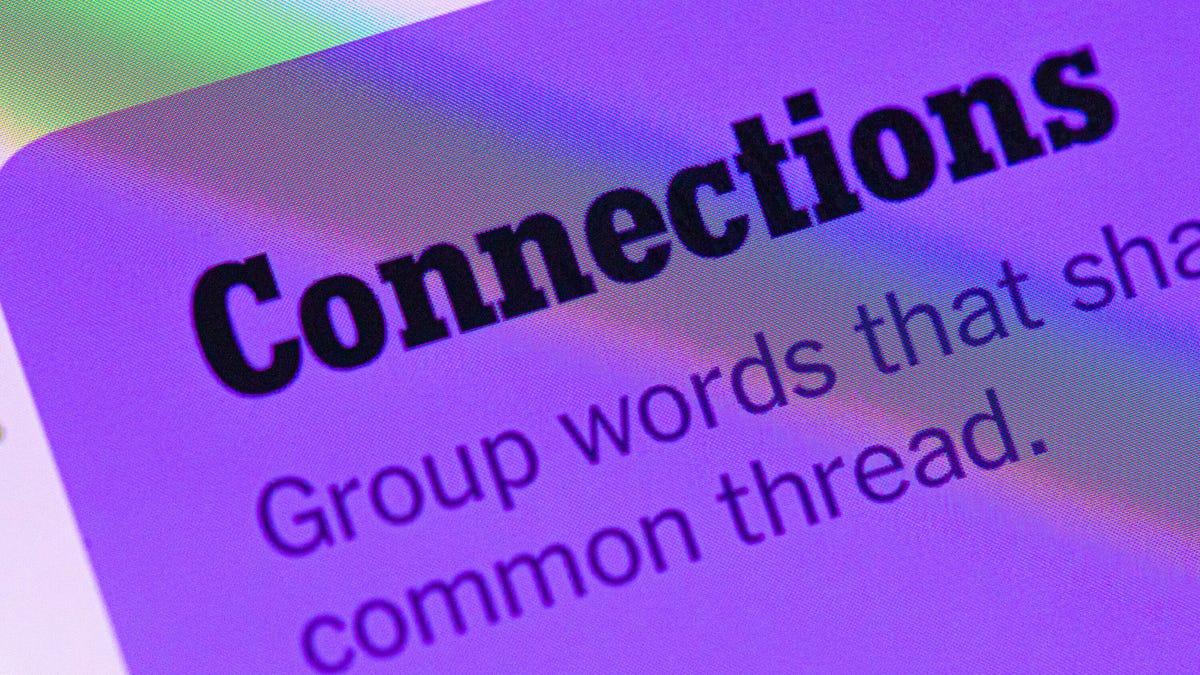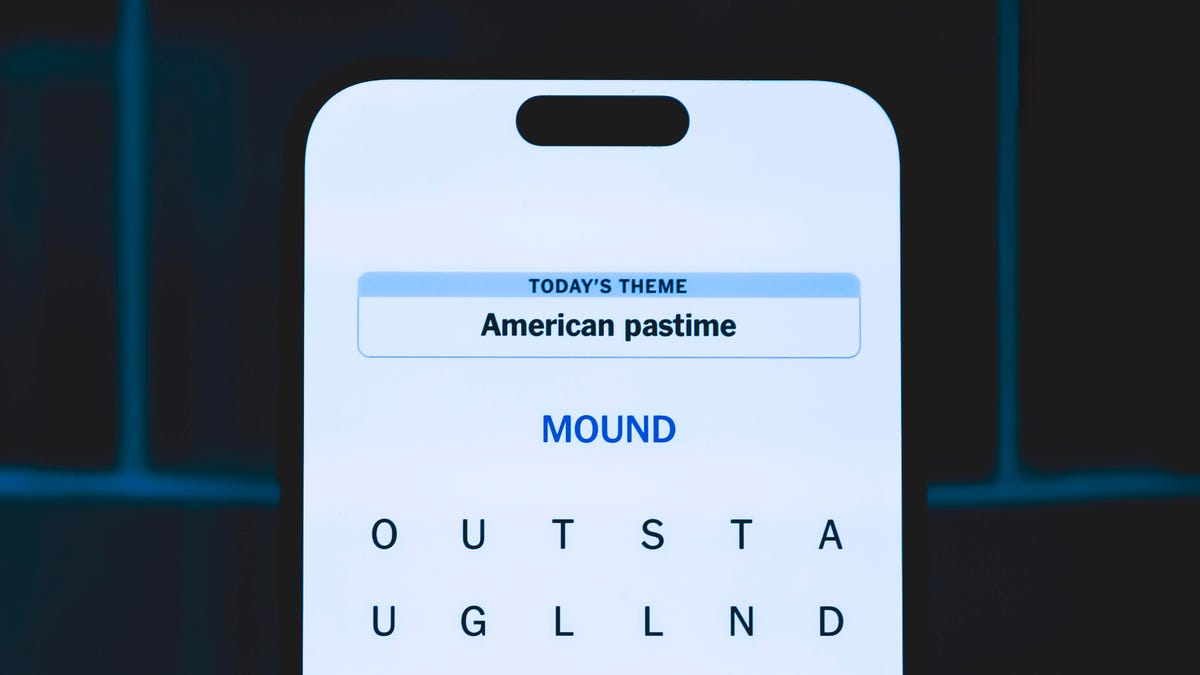Technologies
Your Guide to Epic Universe, the New Universal Theme Park Open Now
An insider’s guide to everything you’ll find at Universal Resort’s brand new theme park, including Donkey Kong Country, dragon drones and robotics, the Ministry of Magic ride and the werewolf roller coaster.

Universal Resort Orlando’s brand new theme park Epic Universe is now open, and CNET has all the details on the park and its immersive entertainment that ties in with movies, games and technology. We’re here to provide you with an insider’s guide to Epic Universe, which has five lands: Super Nintendo World, How to Train Your Dragon — Isle of Berk, Dark Universe, the Wizarding World of Harry Potter: Ministry of Magic and Celestial Park.
Epic Universe is the fourth Universal Orlando theme park, after Universal Studios Florida, Islands of Adventure and water park Volcano Bay. Universal says it’s goal is to be «a weeklong vacation destination,» much like its Orlando theme park competitor Walt Disney World, which has six theme parks (Magic Kingdom, Epcot, Animal Kingdom and Hollywood Studios, along with water parks Blizzard Beach and Typhoon Lagoon).
Part of Universal’s expansion also includes three new hotels: Universal Helios Grand Hotel, Universal Stella Nova Resort and Universal Terra Luna Resort, bringing its total to 11 hotels. (Disney World has more than 20 hotels, for comparison.)
Check out CNET’s guide below for what you need to know about Epic Universe, including ticket prices, new rides, restaurants and experiences. And read here for more on Universal’s planned UK theme park.
Super Nintendo World (featuring Donkey Kong Country)
Universal Orlando is finally joining Universal Studios Japan and Universal Studios Hollywood in hosting a Mario-themed land. Much like in the Japan and Hollywood parks, the marquee ride is Mario Kart: Bowser’s Challenge, where you hop inside a kart, collect coins and throw shells to try to win the cup.
There’s also Mine Cart Madness, a Donkey Kong-themed roller coaster, and Yoshi’s Adventure, where you board a Yoshi and go egg-spotting through the Mushroom Kingdom.
There are meet and greets with Mario, Luigi, Princess Peach and Toad, and the Toadstool Cafe for your dining needs.
Buy a Power-Up Band and you’ll be able to collect coins throughout the land and rides on the wearable wristband. It works throughout all three Super Nintendo World locations.
How to Train Your Dragon — Isle of Berk
How to Train Your Dragon finally has some space in a Universal theme park, 15 years after the original movie (which still has 99% critic rating on Rotten Tomatoes) was released in 2010.
The much-loved DreamWorks movie, which featured Hiccup the teenage Viking and his quest to befriend rather than kill a dragon he names Toothless, spawned two sequels (both with over 90% on Rotten Tomatoes), as well as 10 seasons of two separate animated series and a live-action version of the first movie, which releases in June.
Now, you’ll be able to visit Berk (Florida’s version). It won’t be as cold, but it will be filled with Viking characters walking around the land, dragon robots you can greet on the ground and dragons flying over the colorful wooden buildings.
Hiccup’s Wing Gliders is the main attraction, a roller coaster that simulates the experience of riding on a dragon. A second ride, Dragon Racer’s Rally, will see each rider strapped into an individual dragon-shaped seat attached to a pendulum arm, flipping upside down as the arm swings up and around.
There’s also a water ride called Fyre Drill, where you’ll board a Viking longboat and shoot water cannons at the dragon targets and other boats you sail past, while you in turn get soaked.
For the younger visitors, Viking Training Camp is an adventure playground where they can climb, run, slide and play with interactive elements.
Rounding out the land is a live show starring Hiccup, Toothless, Astrid and Gobber, and Mead Hall, a dining option serving Scandinavian offerings like fish, meat, ale and mead.
Dark Universe, and Classic Universal monsters
This sinister-sounding land is dedicated to all the classic Universal monsters out there, with villains from Frankenstein’s monster to Dracula, The Wolf Man, The Mummy and the Creature from the Black Lagoon roaming Darkmoor Village.
Monsters Unchained: The Frankenstein Experiment is a ride inside a spooky Victorian manor, where you need to escape the experiments of Dr. Victoria Frankenstein. A second ride, Curse of the Werewolf, is a coaster that soars through the forest as you escape a pack of werewolves.
You can also experience the wonders of theatrical makeup and be transformed into a werewolf, vampire or mummy with the Monster Makeup Experience.
There are two dining locations in Dark Universe:
- Das Stakehaus, a vampire-themed restaurant.
- The Burning Blade Tavern, a more casual eatery inside a windmill that catches fire several times each hour.
Wizarding World of Harry Potter: Ministry of Magic
This is the third Harry Potter location at Universal Orlando, after the Diagon Alley area in Universal Studios Florida and the Hogwarts/Hogsmeade area in Islands of Adventure.
It’ll span both the Fantastic Beasts movies and the original Harry Potter series, meaning most of the land is themed after Paris in the 1920s, from where you can travel by the Métro-Floo network to the British Ministry of Magic in the 1990s.
The main attraction is the Battle at the Ministry ride, where you’ll help the trio fight Dolores Umbridge. It’s similar to the mechanics of the Hogwarts ride, except you’ll be in an elevator compartment at the Ministry of Magic, and it also features much-updated technology so it’s even more immersive.
There’s also Le Cirque Arcanus, a live show with performers, puppets and special effects, and is set in the Fantastic Beasts universe.
There’s plenty to explore in this new area, including a new wand store called Cosme Acajor Baguettes Magique, more interactive wand locations and a French restaurant called Café L’air De La Sirène.
It’s not connected to the Hogwarts Express train ride that goes between the other two Harry Potter lands in Orlando, however, due to the park’s distance from Universal Studios Florida and Islands of Adventure.
Celestial Park
Celestial Park is themed as a cosmic getaway, where you can ride a rocket at speeds of up to 62mph on the dual-launch roller coaster Stardust Racers — or if something slower-paced is more your thing, you can ride the Constellation Carousel.
There are also two restaurants — Atlantic and The Blue Dragon Pan-Asian Restaurant — as well as a shopping location called the Nintendo Super Star Store.
Celestial Park is the hub of the new theme park: you’ll enter Epic Universe into Celestial Park, and from there can take one of the four portals into the other lands.
How much do Epic Universe tickets cost?
Ticket pricing depends on how many days you want to spend at Universal Studios Florida, as well as which parks you want to go to, and whether you want to visit more than one park each day. Here are the options and starting prices. Keep in mind that pricing will change depending on what day of the week and time of year you visit, too.
For now, you can only purchase multiday park tickets to visit Epic Universe, unless you’re a Universal passholder. In future, Universal will allow you to buy a single-day ticket to visit the new park, but that option is not yet available.
3-day park tickets
- 3 day, 4-park hopper: $452/adult, $442/child (Note: you can only spend one day inside Epic Universe, while on the other two days you can hop between Universal Studios, Islands of Adventure and Volcano Bay).
- 3-day, 3-park hopper: $412/adult, $402/child (Note: you can only spend one day inside Epic Universe, while on the other two days you can hop between Universal Studios and Islands of Adventure).
- 3-day, 3 parks, one park per day: $352/adult, $342/child (Note: you can only spend one day inside Epic Universe, one day at Universal Studios and one day at Islands of Adventure).
4-day park tickets
- 4-day, 4-park hopper: $486/adult, $476/child (Note: you can only spend one day inside Epic Universe, while on the other three days you can hop between Universal Studios, Islands of Adventure and Volcano Bay).
- 4-day, 3-park hopper: $436/adult, $426/child (Note: you can only spend one day inside Epic Universe, while on the other two days you can hop between Universal Studios and Islands of Adventure).
- 4-day, 4 parks, one park per day: $421/adult, $411/child (Note: you can only spend one day inside Epic Universe, one day at Universal Studios, one day at Islands of Adventure and one day at Volcano Bay).
- 4-day, 3 parks, one park per day: $371/adult, $361/child (Note: you can only spend one day inside Epic Universe, one day at Universal Studios and one day at Islands of Adventure).
5-day park tickets
- 5-day, 4-park hopper: $522/adult, $512/child (Note: you can only spend one day inside Epic Universe, while on the other four days you can hop between Universal Studios, Islands of Adventure and Volcano Bay).
- 5-day, 3-park hopper: $462/adult, $452/child (Note: you can only spend one day inside Epic Universe, while on the other four days you can hop between Universal Studios and Islands of Adventure).
- 5-day, 4 parks, one park per day: $452/adult, $442/child (Note: you can only spend one day inside Epic Universe, and then choose between Universal Studios, Islands of Adventure and Volcano Bay for your other one-day tickets).
- 5-day, 3 parks, one park per day: $392/adult, $382/child (Note: you can only spend one day inside Epic Universe, and then choose between Universal Studios and Islands of Adventure for your other one-day tickets).
Express Pass and VIP tours at Epic Universe
You can now also purchase a 1-day Express Pass for Epic Universe that’ll allow you to skip the lines at each attraction once. The cost is between $130 and $310 per person (on top of your regular ticket), depending on what date you go.
And if you want a truly luxe experience, you can fork over between $390 and $650 per person (also on top of your ticket) for a 4-hour VIP guided walking tour of the new park. With a VIP package, you’ll also get priority entrance to the rides, a discount on merchandise, complimentary valet parking and more.
Technologies
Meta Wins Antitrust Case, Won’t Have to Give Up WhatsApp or Instagram
The FTC claimed Meta held an illegal monopoly in social networking.

Meta has won its antitrust case against the Federal Trade Commission. The FTC said Meta held an illegal monopoly in social networking — centering on the company’s acquisitions of WhatsApp and Instagram.
Judge James Boasberg of the US District Court for the District of Columbia released a memorandum opinion on Tuesday, stating that the FTC failed to prove its claims in court.
Don’t miss any of our unbiased tech content and lab-based reviews. Add CNET as a preferred Google source.
«Whether or not Meta enjoyed monopoly power in the past,» Boasberg wrote in the filing, «the agency must show that it continues to hold such power now.»
Boasberg initially dismissed the FTC’s complaint in 2021, stating that the agency lacked sufficient evidence that Meta holds «market power» in the social networking industry. At the time, the FTC argued that «Facebook’s course of conduct has eliminated nascent rivals,» preventing «the benefits of competition, including increased choice, quality and innovation» from developing for US social media users.
After the FTC amended its filing with information about Meta’s user numbers and acquisitions of the WhatsApp and Instagram applications, Boasberg allowed the case to proceed in 2022.
The trial began in April, and multiple high-ranking current and former Meta executives testified before the court — chief among them, Meta CEO Mark Zuckerberg. Much of Zuckerberg’s testimony focused on refuting the FTC’s primary claim, which hinged on an argument Zuckerberg made in 2008: «It is better to buy than compete.»
Meta’s win means the company will be able to continue operating WhatsApp and Instagram unimpeded. Had the FTC proven its claims in court, Meta likely would have had to break these applications off into their own separate social networking companies.
Meta released a public statement on Tuesday, stating that the decision «recognizes that Meta faces fierce competition» in the social networking industry.
«Our products are beneficial for people and businesses and exemplify American innovation and economic growth,» the statement read. «We look forward to continuing to partner with the Administration and to invest in America.»
FTC Director of Public Affairs Joe Simonson said the agency is «deeply disappointed» with the outcome of the case.
«The deck was always stacked against us with Judge Boasberg, who is currently facing articles of impeachment,» he said. «We are reviewing all our options.»
Republican lawmakers have tried multiple times to impeach Boasberg, a frequent political target of the Trump administration.
While Meta’s antitrust case may be over, it didn’t take place in a vacuum. Google recently settled a case with the FTC that resulted in the search giant being told it must share limited search and user-interaction data with «qualified competitors.» Another case targeting Google’s AI overview feature is ongoing in the European Union, as a group of publishers claims the company is causing harm due to a loss of traffic, readership, and revenue.
Technologies
Today’s NYT Connections Hints, Answers and Help for Nov. 19, #892
Here are some hints and the answers for the NYT Connections puzzle for Nov. 19, #892

Looking for the most recent Connections answers? Click here for today’s Connections hints, as well as our daily answers and hints for The New York Times Mini Crossword, Wordle, Connections: Sports Edition and Strands puzzles.
Today’s NYT Connections puzzle has one of those classic purple categories, where four words have hidden connected words inside them. If you need help sorting them into groups, you’re in the right place. Read on for clues and today’s Connections answers.
The Times now has a Connections Bot, like the one for Wordle. Go there after you play to receive a numeric score and to have the program analyze your answers. Players who are registered with the Times Games section can now nerd out by following their progress, including the number of puzzles completed, win rate, number of times they nabbed a perfect score and their win streak.
Read more: Hints, Tips and Strategies to Help You Win at NYT Connections Every Time
Hints for today’s Connections groups
Here are four hints for the groupings in today’s Connections puzzle, ranked from the easiest yellow group to the tough (and sometimes bizarre) purple group.
Yellow group hint: Not petite.
Green group hint: You learn this in driver’s ed.
Blue group hint: Nevermore!
Purple group hint: Look for hidden words having to do with the body.
Answers for today’s Connections groups
Yellow group: Stocky.
Green group: Steer.
Blue group: Second words in Poe stories, after «The.»
Purple group: Organ plus a letter.
Read more: Wordle Cheat Sheet: Here Are the Most Popular Letters Used in English Words
What are today’s Connections answers?
The yellow words in today’s Connections
The theme is stocky. The four answers are husky, solid, squat and thick.
The green words in today’s Connections
The theme is steer. The four answers are direct, guide, lead and shepherd.
The blue words in today’s Connections
The theme is second words in Poe stories, after «The.» The four answers are cask, fall, masque and pit.
The purple words in today’s Connections
The theme is organ plus a letter. The four answers are colony (colon), hearth (heart), lunge (lung) and skink (skin).
Technologies
Today’s NYT Strands Hints, Answers and Help for Nov. 19 #626
Here are hints and answers for the NYT Strands puzzle for Nov. 19, No. 626.

Looking for the most recent Strands answer? Click here for our daily Strands hints, as well as our daily answers and hints for The New York Times Mini Crossword, Wordle, Connections and Connections: Sports Edition puzzles.
Today’s NYT Strands puzzle is easier than most days. It helps if you know world religions. Some of the answers are difficult to unscramble, so if you need hints and answers, read on.
I delve into the rules for Strands in this story.
If you’re looking for today’s Wordle, Connections and Mini Crossword answers, you can visit CNET’s NYT puzzle hints page.
Read more: NYT Connections Turns 1: These Are the 5 Toughest Puzzles So Far
Hint for today’s Strands puzzle
Today’s Strands theme is: Divinely inspired.
If that doesn’t help you, here’s a clue: Different beliefs.
Clue words to unlock in-game hints
Your goal is to find hidden words that fit the puzzle’s theme. If you’re stuck, find any words you can. Every time you find three words of four letters or more, Strands will reveal one of the theme words. These are the words I used to get those hints, but any words of four or more letters that you find will work:
- BRIM, BEAR, PEST, RIGS, ROPE, GRIP, GRIPE, GOES, GUILE, MAIM, GRAD
Answers for today’s Strands puzzle
These are the answers that tie into the theme. The goal of the puzzle is to find them all, including the spangram, a theme word that reaches from one side of the puzzle to the other. When you have all of them (I originally thought there were always eight but learned that the number can vary), every letter on the board will be used. Here are the nonspangram answers:
- IMAM, RABBI, PRIEST, MONK, BUDDHA, PROPHET
Today’s Strands spangram
Today’s Strands spangram is RELIGIOUSFIGURES. To find it, start with the R that’s three letters to the right on the bottom row, and wind up.
-

 Technologies3 года ago
Technologies3 года agoTech Companies Need to Be Held Accountable for Security, Experts Say
-

 Technologies3 года ago
Technologies3 года agoBest Handheld Game Console in 2023
-

 Technologies3 года ago
Technologies3 года agoTighten Up Your VR Game With the Best Head Straps for Quest 2
-

 Technologies4 года ago
Technologies4 года agoBlack Friday 2021: The best deals on TVs, headphones, kitchenware, and more
-

 Technologies4 года ago
Technologies4 года agoVerum, Wickr and Threema: next generation secured messengers
-

 Technologies4 года ago
Technologies4 года agoGoogle to require vaccinations as Silicon Valley rethinks return-to-office policies
-

 Technologies4 года ago
Technologies4 года agoOlivia Harlan Dekker for Verum Messenger
-

 Technologies4 года ago
Technologies4 года agoiPhone 13 event: How to watch Apple’s big announcement tomorrow
